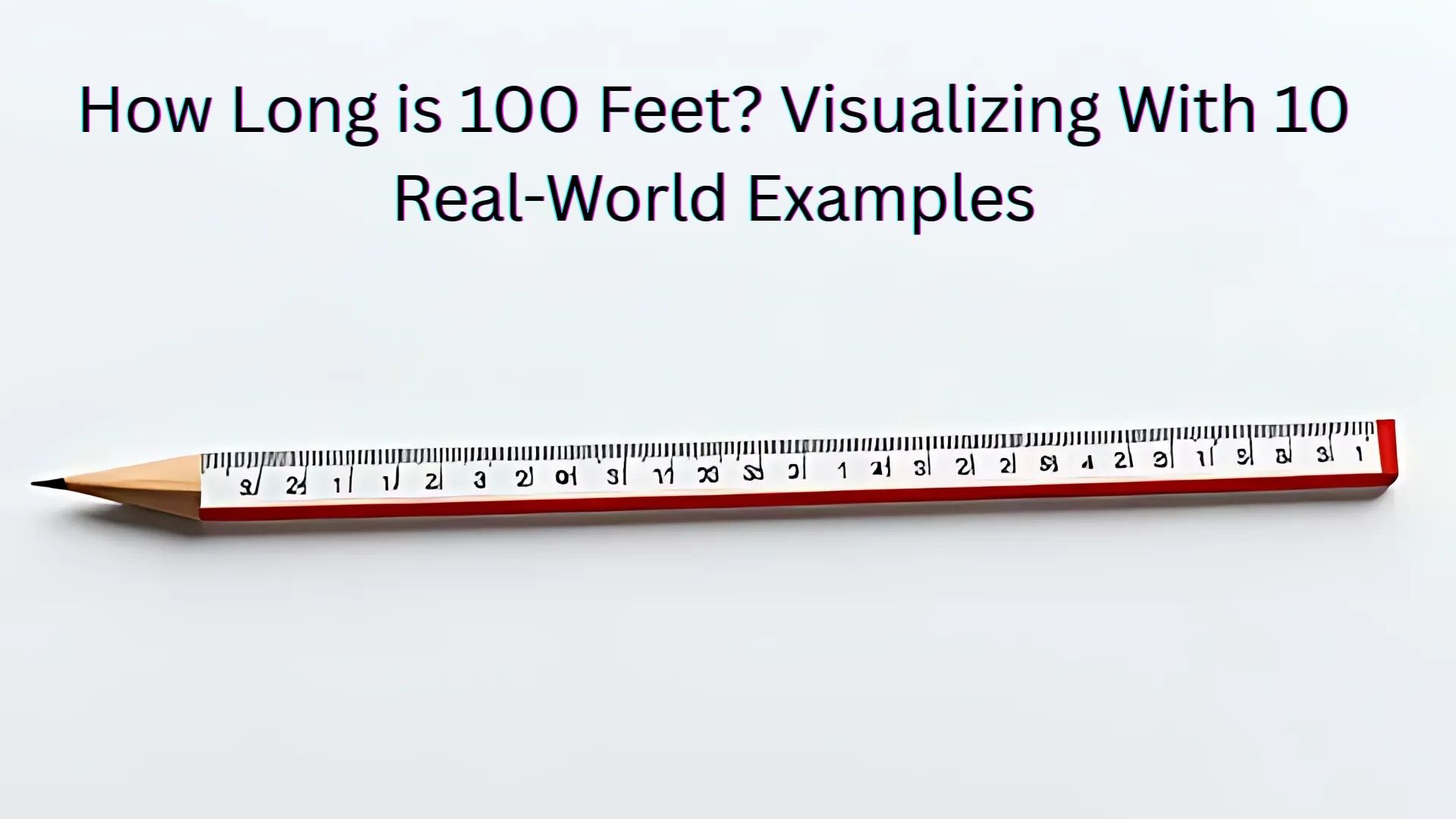Understanding distance can be challenging when numbers don’t create a mental image. If you’ve ever asked how long is 100 feet or searched for a 100 feet example, this guide breaks it down with precise comparisons. We’ll explore what 100 feet looks like, its equivalents in other measurements, and objects that are 100 feet in length to help you picture this distance effortlessly.
Understanding 100 Feet: Quick Conversions
Before diving into examples, let’s define what is 100 feet in different systems:
| Measurement Type | Conversion |
|---|---|
| 100 feet in meters | 30.48 meters |
| 100 feet in yards | 33.33 yards |
| 100 feet in inches | 1,200 inches |
| 100 feet in centimeters | 3,048 cm |
The 100 ft to meters conversion is essential for global readers. Many industries—like construction, sports, and aviation—use these conversions for planning and design.
A Standard Basketball Court
One of the most relatable 100 feet examples is a basketball court. An NBA or NCAA basketball court is 94 feet long. Stand at one end and look to the other—then add just 6 feet, and you’ll have 100 feet of distance.
Basketball court dimensions:
- Length: 94 feet
- Width: 50 feet
This makes a basketball court a simple 100 feet visualization tool.
The Length of a Blue Whale
The majestic blue whale is one of the few living creatures that matches this measurement almost exactly. The blue whale length averages 98 to 100 feet. This comparison is powerful because it shows just how massive these animals are. Imagine one stretched out—it’s nearly identical to 100 feet.
Seven Average Cars Lined Up End-to-End
How many cars make 100 feet? With the average sedan measuring 14–15 feet, seven cars parked bumper-to-bumper give you a perfect size comparison of 100 feet. This is an excellent visual distance estimation technique when you’re on the road.
| Object | Approximate Length | Cars Needed for 100 ft |
| Average Sedan | 14–15 feet |
A 10-Story Building
Wondering about 10-story building height? Each floor averages 10 feet. Stack 10 floors, and you’re looking at a structure that’s about 100 feet tall. Standing at street level, this is a striking way to visualize 100 feet vertically.
Two Semi-Trucks
In trucking, measurements matter. The semi-truck length for a typical tractor-trailer is 50–53 feet. Park two of them end-to-end, and you’ll get close to 100 feet. This is a great 100 feet reference point in highway and logistics scenarios.
Cricket Pitch and Boundary Comparison
Cricket provides another excellent 100 feet comparison. A standard cricket pitch measurement is 66 feet (20.12 meters). Add about half a pitch, and you’ll have roughly 100 feet. Cricket enthusiasts can instantly grasp this.
A Boeing 737 Aircraft
Planes give a dramatic sense of scale. A Boeing 737’s dimensions are 100–110 feet long depending on the model. Walking alongside one on a runway perfectly answers what is 100 feet long in aviation.
Distance Covered in 20–25 Steps
An average adult step is 3.5–5 feet. Taking 20 to 30 steps covers approximately 100 feet. This is a practical way to measure 100 feet distance without tools. Try it in a backyard or hallway.
Four School Buses
The school bus length averages 25 feet. Four buses lined up nose-to-tail are a great 100 feet visualization. It’s also a practical reference for families and educators.
Two Telephone Poles
Utility poles provide an everyday landmark. The standard telephone pole height is 40–50 feet. Place two side-by-side, and you’ll see what 100 feet looks like towering above you.
Quick-Reference Comparison Table
| Object/Example | Approximate Length | Relation to 100 Feet |
| Basketball Court | 94 ft | Slightly shorter |
| Blue Whale | 98–100 ft | Almost exact |
| 7 Sedans | 14–15 ft each | ~100 ft total |
| 10-Story Building | 10 ft per floor | ~100 ft tall |
| Semi-Truck | 50–53 ft | Two equal ~100 ft |
| Cricket Pitch | 66 ft | 1.5 pitches |
| Boeing 737 | 100–110 ft | Matches 100 ft |
| Adult Steps | 3.5–5 ft/step | 20–25 steps cover 100 ft |
| School Bus | 25 ft | Four buses equal 100 ft |
| Telephone Pole | 40–50 ft | Two poles equal ~100 ft |
Why Knowing 100 Feet Matters
Understanding distance of 100 feet isn’t just trivia. It has practical value:
- Construction: Accurate estimates prevent costly mistakes.
- Road Planning: Road signs often refer to distances like 100 feet.
- Sports: From basketball to cricket, 100 feet reference points are crucial.
- Emergency Safety: Fire safety guidelines often reference objects 100 feet long.
Estimating 100 Feet Without Tools
Here are practical ways to estimate 100 feet:
- Car Count: Line up seven cars.
- Step It Out: Count 20–25 steps.
- Building Heights: Visualize a 10-story building.
- Street Poles: Use two telephone poles.
These methods make distance measurement in everyday objects intuitive.
Conclusion
Now you know exactly how long is 100 feet and can easily picture it using real-world items. From a blue whale length to semi-truck measurements, these comparisons give you a mental map for 100 feet examples. Whether you’re planning construction, teaching kids about distance, or simply curious, these references make it easier to visualize 100 feet anywhere.

Johan is an professional & experienced blogger passionate about language and writing on Grammar root. He shares his expertise in grammar, punctuation, and effective communication, making complex rules simple and accessible for readers. With a knack for clear explanations and engaging content, Steel aims to help others master the art of language.

